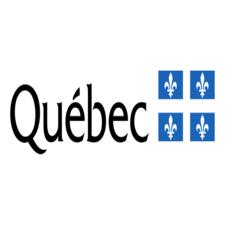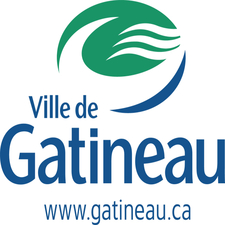Fire
Type of resources
Available actions
Topics
Keywords
Contact for the resource
Provided by
Formats
Representation types
Update frequencies
status
-

All fire hydrants that cover the territory of the city of Saguenay.**This third party metadata element was translated using an automated translation tool (Amazon Translate).**
-

Set of fire stations in Quebec. Purpose: To identify fire stations located throughout Quebec. DISCLAIMER: This data may differ from reality in some places.**This third party metadata element was translated using an automated translation tool (Amazon Translate).**
-

Standard fire hydrant v1**This third party metadata element was translated using an automated translation tool (Amazon Translate).**
-

Fire hydrants on the territory of Lévis**This third party metadata element was translated using an automated translation tool (Amazon Translate).**
-

Location of fire hydrants on the territory of the City of Repentigny.**This third party metadata element was translated using an automated translation tool (Amazon Translate).**
-

Map of Quebec City fire hydrants**This third party metadata element was translated using an automated translation tool (Amazon Translate).**
-

Set describing the administrative territories of the barracks on the entire island of Montreal. The [Fire Stations on the Island of Montreal] data set (fire stations) provides the location of the fire stations.**This third party metadata element was translated using an automated translation tool (Amazon Translate).**
-

Data set listing the interventions carried out by the Montreal Fire Safety Service (SIM), including the location of interventions and the units deployed since 2005. This data is taken from the Workstation Assisted Dispatch System (RAO), a central subsystem of the intervention management system that allows real-time management, vehicle dispatch and operational monitoring of interventions. This data is collected to produce reports required by the Ministry of Public Security and required for the SIM. It also makes it possible to compile statistics in order to disseminate information to citizens, the media and insurers.**This third party metadata element was translated using an automated translation tool (Amazon Translate).**
-

Inventory of fire hydrants located on the territory of the City of Longueuil and its positioning.**This third party metadata element was translated using an automated translation tool (Amazon Translate).**
-

__The link: *Access the data directory* is available in the section*Dataset Description Sheets; Additional Information*__. The forest fire map shows forest fires that occurred mainly in the territory of southern Quebec, i.e. the area located south of the territorial limit of attributable forests. This map data makes it possible to improve knowledge about fire regimes and to meet the specific needs of special management plans following forest fires. They can also be used to meet a variety of study and research needs, such as analyzing the impact of climate change, modeling post-fire regeneration, and studying ecosystem dynamics. This information is obtained from and produced from a variety of sources, including satellite images, aerial photographs, field or aerial surveys, fire scar dating, and archival documents. This data contains four types of mapping as well as fire regime mapping: • **Detailed fire mapping, from 1976 to today**. This mapping includes burn types, total burn and partial burn, when information is available. In addition, for fires that have been characterized, information on the classes of burning patterns is added. The minimum mapping area can be up to 0.1 ha, depending on the source products used. This map is partially available for sectors located in the north of southern Quebec. • **Mapping the simplified contours of fires, from 1972 to today**. This map shows the external contours of fires (without fragmentation), in order to represent them globally in a product that can be easily used and integrated into current information systems, GPS or others. Resulting from the fusion of detailed fire mapping, this product was designed to meet various customer needs. This map is partially available for sectors located in the north of southern Quebec. • **The mapping of the points of origin of fires** having been listed by the protection organizations (e.g.: SOPFEU) for the period from 1972 to the present. This mapping includes the date, the source of ignition (human or lightning) and the protection zone. It is available for the whole of Quebec. • **The mapping of ancient fires concerns fires that occurred between the very end of the 19th century and 1975**. This mapping comes from the information present on the forest maps of the first and second inventories, as well as from the information contained on the ecoforest maps of the third and fourth inventories. The dating of these fires is done using various methods, including the analysis of study trees bearing fire scars and the consultation of archival documents. These data are available for the following regions: Saguenay-Lac-Saint-Jean (02), Bas-Saint-Laurent (02), Bas-Saint-Laurent (01), Gaspésie-Îles-de-la-Madeleine (11), Abitibi-Témiscamingue (08), Mauricie-Centre-du-Québec (02), Mauricie-Centre-du-Québec (02), Bas-Saint-Laurent (01), and Lanaudière-Laurentides (14-15). • **Mapping fire regimes in southern Québec**. This map shows 13 zones with distinct fire regimes. These areas were delineated based on available information on the areas burned during the period 1890-2020 and other potentially decisive environmental variables, such as physiography, the abundance of different tree species known to be dependent on fire as well as the location of natural and anthropogenic ignitions. Fire regime mapping covers all forest areas under management as well as a more northern portion that is not managed. The detailed methodology is presented in Forest Research Paper no. 189 “Zoning fire regimes in southern Quebec” (coming soon). This zoning may be useful to ensure better consideration of the risk of fire in a forest management context. It can also serve as a territorial basis for projecting future fire activity taking into account various factors, such as climate change, fire suppression as well as changes in the types of fuels and their distribution on the territory. **This third party metadata element was translated using an automated translation tool (Amazon Translate).**
 Arctic SDI catalogue
Arctic SDI catalogue